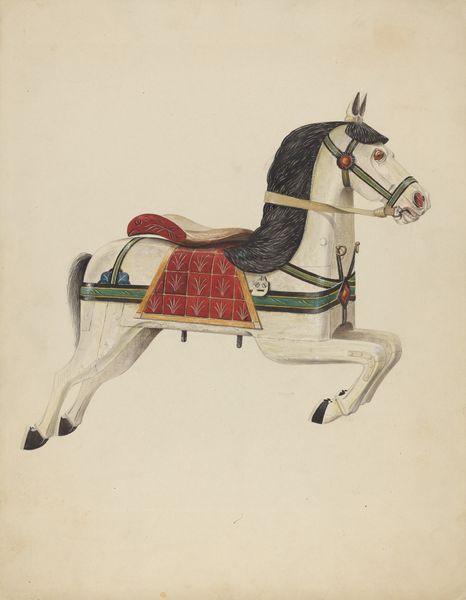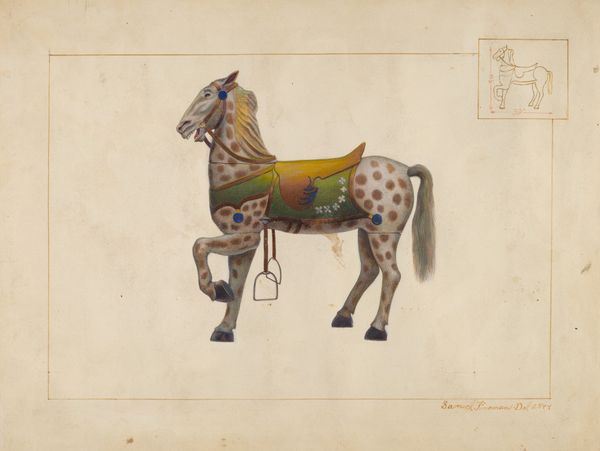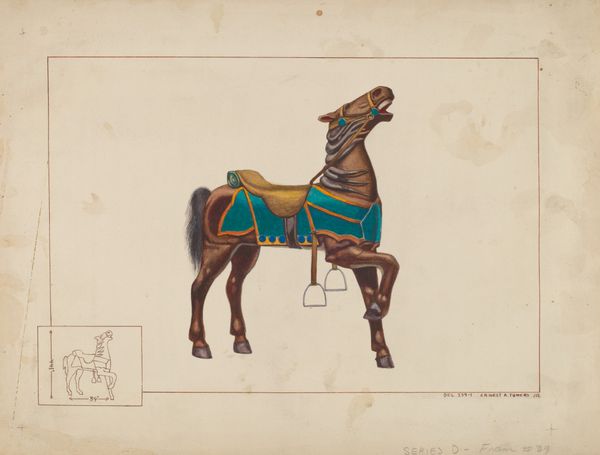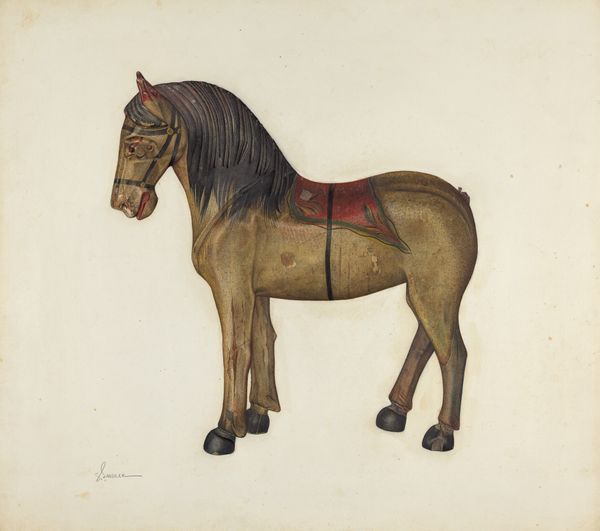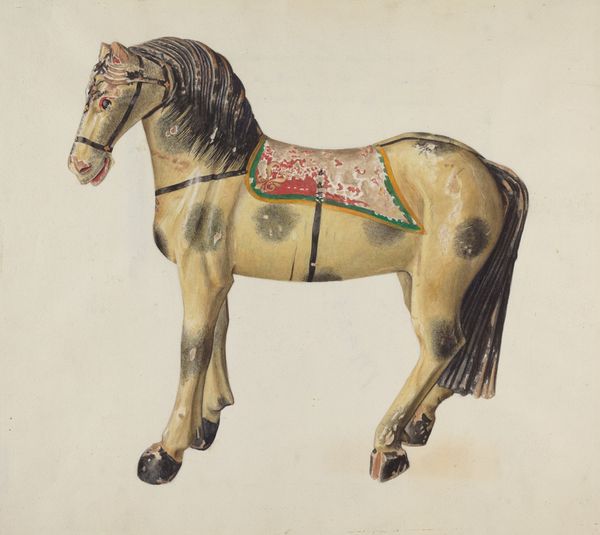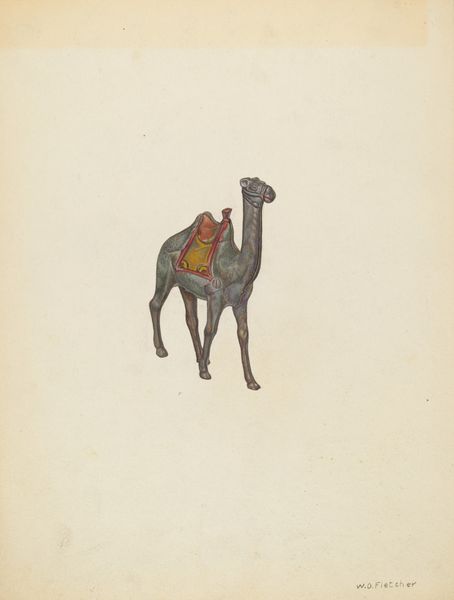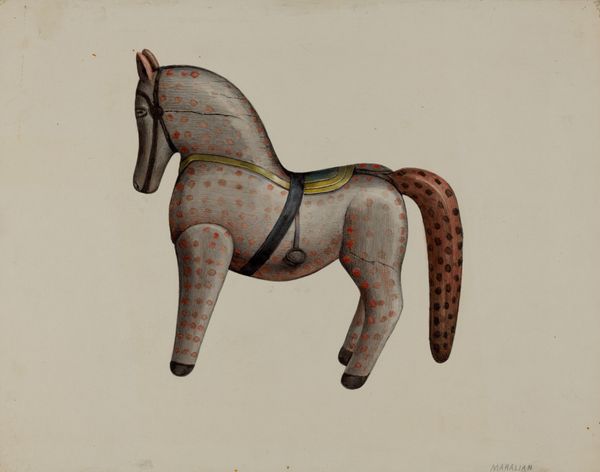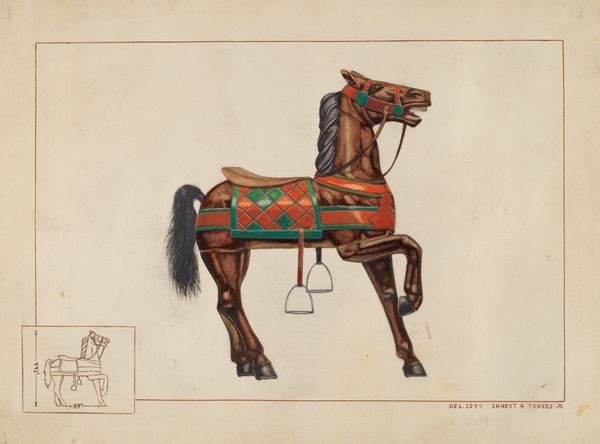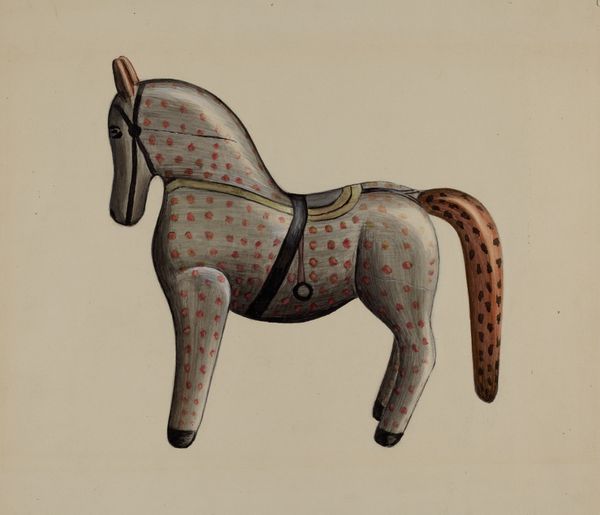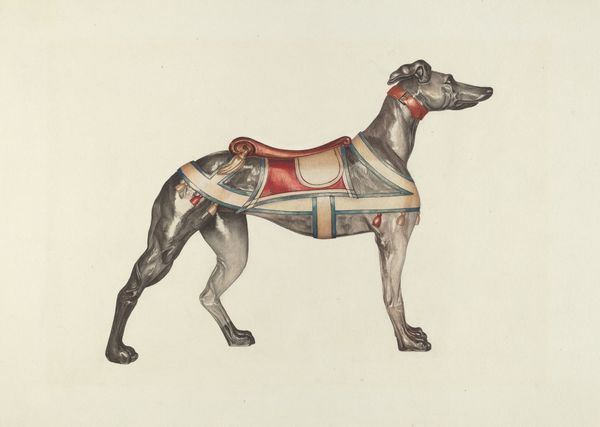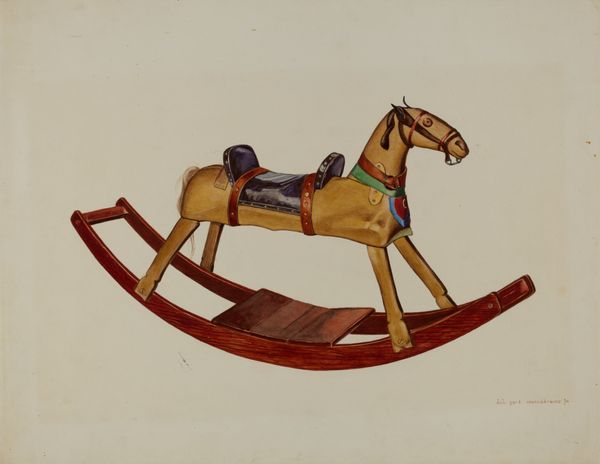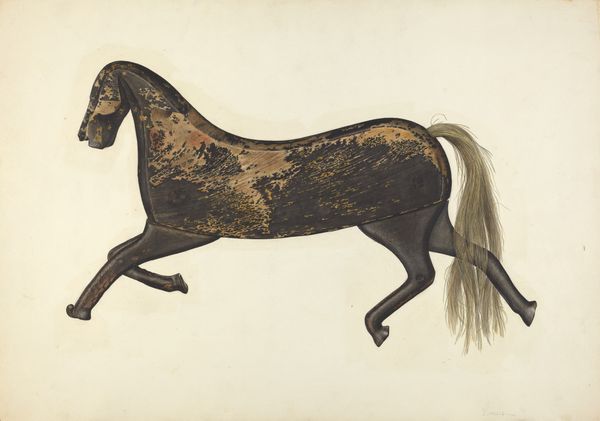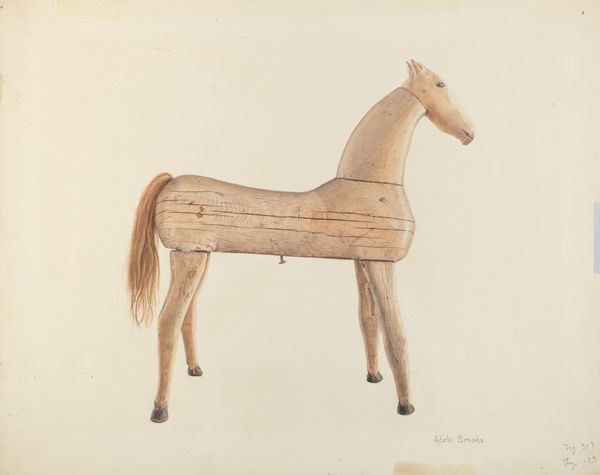
drawing, coloured-pencil, paper, watercolor, pencil
#
drawing
#
coloured-pencil
#
figuration
#
paper
#
watercolor
#
coloured pencil
#
folk-art
#
pencil
#
watercolour illustration
Dimensions: overall: 29.3 x 22.8 cm (11 9/16 x 9 in.) Original IAD Object: 4 3/4" high; 4 1/2" long
Copyright: National Gallery of Art: CC0 1.0
Curator: Here we have Nicholas Acampora’s "Toy Shetland Pony," rendered in 1939. It's a delightful piece using watercolor and colored pencil on paper. Editor: My first impression is pure nostalgia. The gentle colors and folk-art style create a sense of childlike wonder and innocence. Curator: Indeed. There is a disarming naivety to the execution, wouldn't you agree? Folk art often carries within it echoes of cultural identity and shared memory, which certainly feels appropriate when dealing with a "Toy" Shetland Pony. Editor: I think that feeling of nostalgia is also closely tied to the date it was made: 1939. The world teetering on the edge of war, and here's a reminder of simpler, perhaps idealized childhood. Toys themselves become symbolic in times of upheaval. Curator: I hadn’t considered that angle. The pony is itself a layered symbol, representing domestication and transportation; then made into an item of play. Editor: I see the saddle, so carefully decorated, as speaking to something beyond pure utility; even in play, the pony embodies values of tradition and societal structure. The question is, for whom? What is omitted from this scene? Who gets to play, and with what means? Curator: These are valuable questions, to whom this imagery appeals and why. Though simple in its construction, the pony itself presents clear semiotic readings that change as historical forces act upon it. Is it naïve folk art? Is it class commentary in the making? Is it simply the memory of a pleasant childhood? Editor: It can be all of those things, which is where the power and importance of revisiting older work such as this rests. By questioning how identity and history operate inside what seems innocuous or straightforward, we allow it to speak across time. Curator: Yes, it's a conversation. Looking at it afresh gives older art agency that continues far beyond its creation. Thanks for helping reveal the rich textures under the surface. Editor: And thank you for exploring these rich layers of cultural context with me!
Comments
No comments
Be the first to comment and join the conversation on the ultimate creative platform.
